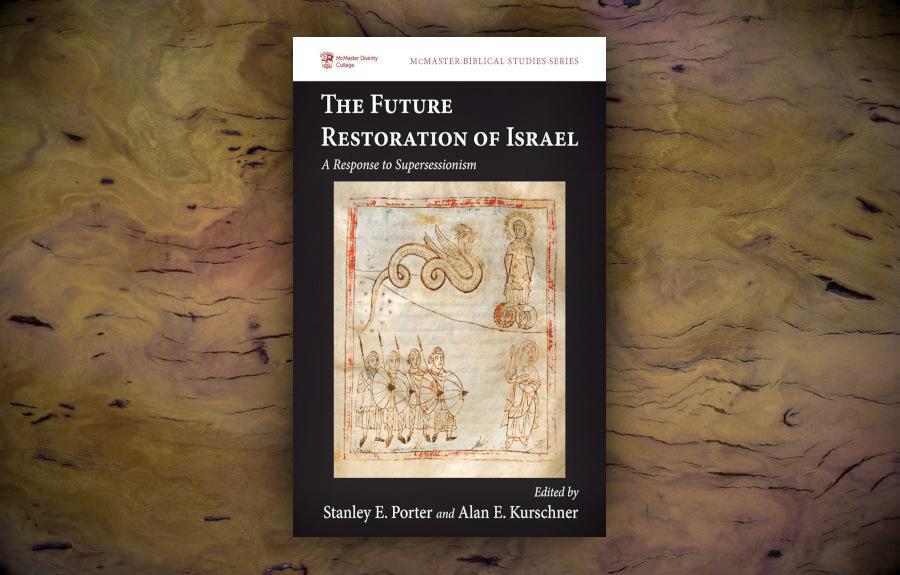A Review of ‘The Future Restoration of Israel’ (Part 3)
Image

Read the series.
The next chapter in the book is by Alan Kurschner, one of the editors of the volume. It engages G. K. Beale’s view of the chronology of the first part of Revelation 7. Basically, Beale believes that the two peoples mentioned in Revelation 7:4-8 and 7:9-12 are the same but seen at different times; the first appearance of them is upon earth, while the second appearance is in heaven (144).
Besides N.T. Wright Beale is the most influential supersessionist writer out there, so I was glad to see someone take him on. In previous engagements with the work of Beale I have referred to his habit of making inferences without much proof. Kurschner highlights many of Beale’s assumptions which find their way into his exegesis (e.g., 144, 145, 146, 154). Overall, I think Kurschner proves that Beale is mistaken and that the there are two people groups in Revelation 7.
I do not buy Kurschner’s view that the seals of Revelation 6 are judicial proceedings which prove guilt and stack up the punishment of God which is meted out at the end of the Tribulation (148-149, 152), neither do I agree that the reference to “the beasts (therion) of the earth” in Revelation 6:8 refers to the beasts of Revelation 13 (the Antichrist and False Prophet). The use of the instrumental sense for the sword, hunger, and death in Revelation 6:8 is proper because they are inanimate objects, whereas the “wild beasts” in the verse are not (see 150).
The person of the Beast is not yet introduced into the storyline of the Book at that point (even though the white horse rider of Rev. 6:2 is probably him, this is only hinted at. He lacks an introduction). Besides, it seems to me that since the action of the Four Horsemen in Revelation 6:1-8 is precipitated by the Lamb’s opening of the seals of the scroll of God (who appears to be depicted as a Judge in Rev. 4-5) it is hard indeed not to interpret these actions as Divine wrath, especially since they equal any demonstrations of God’s wrath found in the OT. Kurschner’s closing summary (156-158) is very well done.
On a separate note, I did find it surprising that he did not list Joel Willits’s chapter on the 144,000 in Beale’s Festschrift (From Creation to New Creation) where Willits contradicts his former teacher’s position.
Kurschner is a well-known defender of the PreWrath rapture position. Another PreWrath advocate, Alan Hultberg, writes a chapter on “The Future Restoration of Israel: Some Theological Considerations.” He contributes a well structured and illuminating chapter with many useful cross references and assertions. He notes, for instance, that even if one allows for certain fulfillments of restoration promises in the first advent, this does not rule out future fulfillment for the nation of Israel (162-163), and as far as Paul is concerned, he is concerned about the nation of Israel (174).
Hultberg continues by explaining that God’s promises include and cannot be separated from geo-political structures (163-166), noting that,
there is a form of the kingdom where Edenic conditions are less than total, a form of the kingdom when the Messiah’s reign of peace, justice, and righteousness is enforced externally; it is not an outgrowth of the internal transformation of all of humanity. (165)
He moves from there to a second reason for the restoration of the nation of Israel: the fact that it is through Israel that God makes His name known among the nations (166-169). This point is well made and is important because it is often lost sight of in discussions of future Israel.
The third reason why we can expect a future fulfillment of God’s promises to Israel is that if it were not to occur God’s faithfulness to His word could be called into question (169-174). Supersessionists fail to grasp this point, largely, I believe, because they already hold that God’s prophecies have this equivocal feature, because, well, He can do what He likes. Hultberg excels here, where he pinpoints Romans 9-11 for study.
Jim Sibley follows Hultberg with a good chapter entitled “Was Ethnic Israel’s Mission Transferable?,” which is often insinuated by supersessionists. We are often told that Israel forsook their position through disobedience and the Church has replaced them. Or that used to be the way it was put before these days where people speak euphemistically about what they really believe. Sibley uses Todd Mangum to capture the main point at issue: “The issue is whether national Israel as an administrative structure is still in the plan of God” (178). This is followed by quotes from two covenant theologians, Bruce Waltke and Cornelis Venema, which answer the question with an emphatic No.
What comes next is a fascinating tour through the history of books on missions (178-181) where the author shows the supersessionist tendencies of many of these books up to and including Christopher Wright’s The Mission of God, which Sibley characterizes as “both supersessionist and anti-Zionist” (180). Sibley uses the second part of his assigned space to give solid coverage to Israel’s role in God’s Creation Project—an excellent presentation (185-192).
Dr Reluctant Articles
Reposted from Dr. Reluctant.
Paul Henebury Bio
Paul Martin Henebury is a native of Manchester, England and a graduate of London Theological Seminary and Tyndale Theological Seminary (MDiv, PhD). He has been a Church-planter, pastor and a professor of Systematic Theology and Apologetics. He was also editor of the Conservative Theological Journal (later Journal of Dispensational Theology). He is now the President of Telos School of Theology.
- 161 views


Discussion